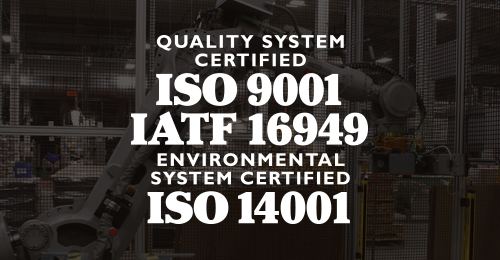Introduction
Without question, the critical service that data centers provide requires an uninterruptable power supply (UPS) that is backed by a reliable, proven power source. Almost as important: The power source must minimize total cost of ownership (TCO) to be sustainable. Experienced data center operators need a battery technology that is a proven and powerful solution.
Safety Profiles Are Critical
LEAD BATTERIES: Non-combustible
Experienced data center operators know lead batteries are an extremely safe and established technology. Technicians and customers are very familiar with them from decades of experience in maintenance, possible failure modes and safety measures. In the rare occurrence that a lead battery fails or would be accidentally exposed to an open flame, it will not become a fire hazard.
LITHIUM BATTERIES: Fire-hazard Restrictions
Lithium batteries are currently made with a flammable electrolyte, which in the case of failure is prone to high temperatures, combustion, and catastrophic damages. Safety and firefighting standards are still being developed through various safety organizations. In addition to safety standards, lithium batteries are subject to more restrictive rules in the Fire Codes (IFC, NFPA 1, and NFPA 855) as well as spacing and floor restrictions.
Lifespan Needs To Be Proven
The service life of lead batteries in critical power applications is proven, with years of field data to support results. Competing battery technologies often misrepresent lifespan comparison by only making comparisons to traditional VRLA batteries, rather than advanced lead batteries with a longer service life. Lithium batteries have not been in market applications long enough to determine actual service life claims of 10 or 15 years.
Reliable Supply Chain and Material Sourcing
LEAD BATTERIES: Reliable, Domestic Supply
For lead batteries that traditionally require virgin lead in applications such as data centers and telecommunications, lead originates from stable countries such as South Korea, Canada, India, Belgium, and Australia.
LITHIUM BATTERIES: Reliant on Imports
In contrast, the lithium battery supply chain is far more unpredictable and more reliant on a single source for materials and production. Applications are also a critical consideration — electric vehicles are the largest segment of lithium-ion powered vehicles. As the demand for electric vehicles continue to skyrocket, the challenge lies in scaling up lithium production to meet that need. It’s important to weigh how that demand challenge affects availability of product for other applications such as data centers. Based on a recent Wall Street Journal article, 75% of the world’s lithium batteries are made in China.
Environmental Impact
LEAD BATTERIES: 100% Recyclable
The recycling and sustainability of lead batteries is a success story. Virtually 100% of a lead battery’s three basic components – lead, plastic, and acid – are recyclable. Today, lead batteries are the most recycled consumer product with a recycling rate of 99%. Not only are they recyclable, but also sustainable, meaning the components are of great value and economically profitable to recycle them for use in new batteries.
LITHIUM BATTERIES: 15% Recycled
Currently, the percentage of lithium batteries that are recycled is less than 15%. Although several companies are exploring ways to meet this challenge, there remains no full-scale North American commercial operation that has shown success in recovering metals for reuse in new lithium batteries similar to the overall sustainability provided by lead battery technology.
Total Cost of Ownership (TCO), Including Replacement
The effect on TCO is shown by comparing a 1MWh UPS system with a standard 20-year life expectancy and advanced heat-tolerant lead batteries. The latter offers savings both in lower initial capital investment and at the end-of-life. Based on a credit of $33/KWH, the advanced lead battery provides a lifetime TCO savings of over $264,000 when compared to the lithium system.
The majority of white papers favoring lithium technology focus on the lead replacement and not lithium’s end-of-life costs, which should be carefully considered. Many in the market refer to repurposing the lithium product at end-of-life which is speculation by lithium battery manufacturers.
Warranted Life
Best-in-class advanced lead batteries are warranted at five years in a UPS application, while lithium batteries are warranted for 10 years. There are two potential flaws in this longer warranty claim, specifically, proven life and components. In data center applications, lithium batteries have not had the proven field usage over a 10-year duration to statistically support those life claims. The other item to consider when examining the warranty of a lithium battery is the required battery management system (BMS) which is sometimes warranted less than the system. Lithium batteries require a BMS to monitor safety and performance. Lead batteries do not.
Higher-temperature Tolerance
Many white papers about lithium refer to the fact that lead battery life declines when operated higher than 77° F. However, they neglect to inform customers that lithium-ion chemistries used in UPS applications have similar life-shortening effects at higher temperatures. While this is accurate for standard lead batteries, it is an inaccurate comparison to advanced, heat-tolerant lead batteries that are designed to operate and provide long life at 95° F.
Service Provider Options
Whether lead or lithium, both systems will need routine maintenance over their lifetime. Data centers should consider how much freedom they want in selecting a maintenance company. Current original equipment manufacturer (OEM) cabinet manufacturers provide the entire UPS, including lithium batteries locking in a single OEM for the duration of the UPS system as well as ongoing service and maintenance.
Supplier Longevity and Data Center Experience
While lithium battery technology is new and exciting, the future remains unclear. There are still many open questions and concerns that need to be addressed for their use in critical power applications. Data centers must also consider the longevity of their battery system supplier.
Conclusion
Our data-driven world demands that data centers have around-the-clock UPS. Selecting a battery technology system requires data center managers to evaluate many key factors in the lead or lithium debate. To read the full white paper click here.

